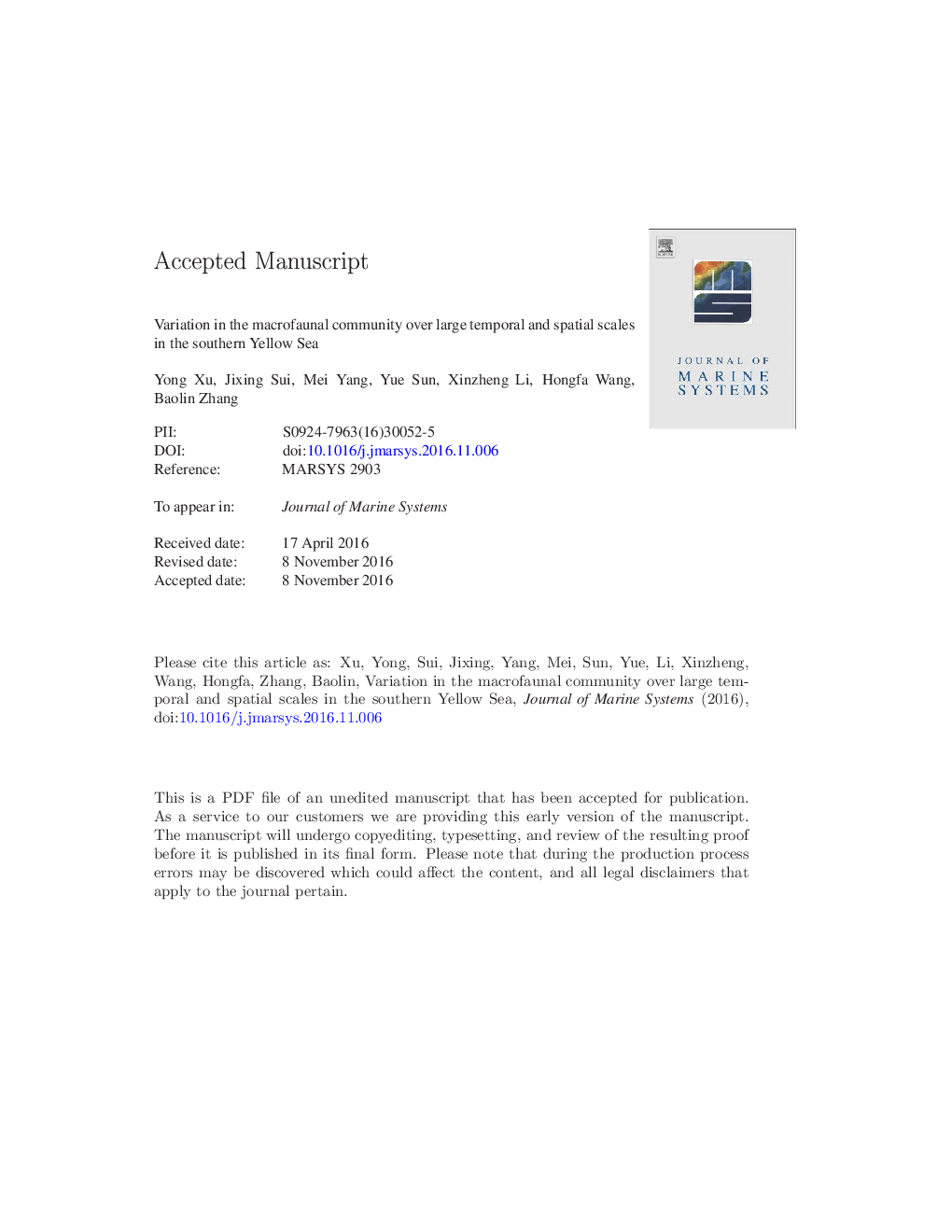| Article ID | Journal | Published Year | Pages | File Type |
|---|---|---|---|---|
| 5765971 | Journal of Marine Systems | 2017 | 22 Pages |
Abstract
To detect large, temporal- and spatial-scale variations in the macrofaunal community in the southern Yellow Sea, data collected along the western, middle and eastern regions of the southern Yellow Sea from 1958 to 2014 were organized and analyzed. Statistical methods such as cluster analysis, non-metric multidimensional scaling ordination (nMDS), permutational multivariate analysis of variance (PERMANOVA), redundancy analysis (RDA) and canonical correspondence analysis (CCA) were applied. The abundance of polychaetes increased in the western region but decreased in the eastern region from 1958 to 2014, whereas the abundance of echinoderms showed an opposite trend. For the entire macrofaunal community, Margalef's richness (d), the Shannon-Wiener index (Hâ²) and Pielou's evenness (Jâ²) were significantly lower in the eastern region when compared with the other two regions. No significant temporal differences were found for d and Hâ², but there were significantly lower values of Jâ² in 2014. Considerable variation in the macrofaunal community structure over the past several decades and among the geographical regions at the species, genus and family levels were observed. The species, genera and families that contributed to the temporal variation in each region were also identified. The most conspicuous pattern was the increase in the species Ophiura sarsii vadicola in the eastern region. In the western region, five polychaetes (Ninoe palmata, Notomastus latericeus, Paralacydonia paradoxa, Paraprionospio pinnata and Sternaspis scutata) increased consistently from 1958 to 2014. The dominance curves showed that both the species diversity and the dominance patterns were relatively stable in the western and middle regions. Environmental parameters such as depth, temperature and salinity could only partially explain the observed biological variation in the southern Yellow Sea. Anthropogenic activities such as demersal fishing and other unmeasured environmental variables may be more responsible for the long-term changes in the macrofaunal community.
Related Topics
Physical Sciences and Engineering
Earth and Planetary Sciences
Oceanography
Authors
Yong Xu, Jixing Sui, Mei Yang, Yue Sun, Xinzheng Li, Hongfa Wang, Baolin Zhang,
